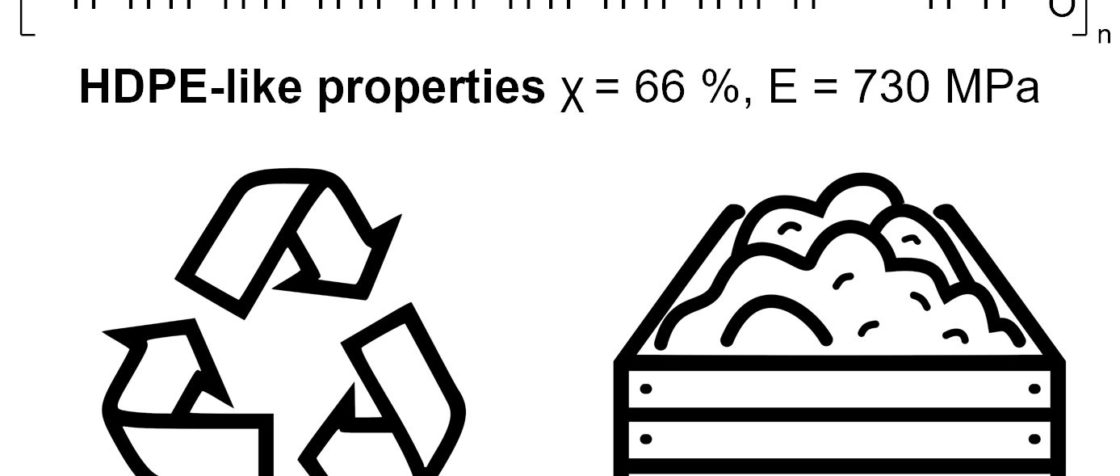
Researchers at the University of Konstanz have developed a biodegradable polyester with properties comparable to those of high-density polyethylene (HDPE).
HDPE’s thermoplastic properties arise from the internal structure of its molecular, hydrocarbon chains, which are arranged in a crystalline manner with added attraction due to van der Waals forces. The combination of crystallinity and hydrocarbon content means microorganisms are unable to access the chains in order to degrade them. Polyesters, on the other hand, contain functional groups that can be degraded chemically or enzymatically. Generally, the more crystalline a polyester is – e.g, the more similar to HDPE – the less readily it can be degraded.
The researchers were surprised to discover that, when exposed to enzymes, the new polyester was found to degrade quickly.
“We tested degradation with naturally occurring enzymes, and it was an order of magnitude faster than with our reference material,” team leader, Stefan Mecking said.
The key factor in this biodegradability was found to be the presence of ethylene glycol.
“This building block is actually really common in polyesters. It gives you a high melting point, but it also increases degradability in these polyethylene-like materials,” stated Mecking.
As this new material has good chemical and biological degradability, along with the mechanical properties that give HDPE high utility, it could find applications as a recyclable thermoplastic material with minimal environmental impact. Mecking pointed out that this new material could play a role in the overall goal of creating a closed-loop chemical recycling to break the plastic down into its raw materials and produce new plastics.
